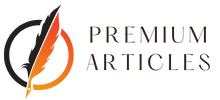In 2020, Google announced its plan to phase out third-party cookies amid growing concerns over online data privacy. According to the platform’s timeline, this removal should be fully effective by 2024. However, many other browsers are introducing similar changes.
While internet users will likely welcome this development, as “65% of them believe that the excessive use of cookies poses a privacy protection issue,” it poses numerous problems for advertisers.
For many years, cookies have played a crucial role in programmatic advertising, allowing advertisers to track user behavior, target customers, and create effective advertising campaigns. It’s not surprising that “16% of marketers believe the abandonment of cookies will have a devastating effect on their business.”
However, the digital advertising ecosystem is constantly evolving, meaning there are many other strategies on which advertisers can rely moving forward. For example, the use of “data clean rooms.”
Understanding Cookie Depreciation Cookie depreciation refers to the gradual elimination of cookies on Google and other search engines.
The reasons for this change are multiple, the most obvious being internet users’ privacy concerns. For instance, a Statista study found that 57% of users felt it was “impossible” to fully protect their online privacy, with many considering cookies a source of vulnerability.
Regulatory changes, such as the Data Protection Act 2018, implemented to better protect internet users’ privacy, have also played a key role in the abandonment of cookies.
The Impact of Cookie Removal on User Behavior Tracking Currently, about 83% of marketers and organizations rely on third-party cookies, especially for launching effective marketing campaigns. After all, these data provide invaluable insights into their consumers based on their search history, previous purchases, and brand preferences. Cookies, therefore, enable them to launch campaigns directly tailored to their consumers, translating into better return on investment.
Clearly, the abandonment of cookies will profoundly impact user behavior tracking, targeting, and personalized advertising. Many organizations are thus striving to identify the best alternatives to third-party cookies, relying, for example, on first- or second-party data.
However, those looking to thrive in a 2024 cookie-less world should consider using data clean rooms.
What is a Data Clean Room? Data clean rooms are secure online environments that allow organizations to analyze and process data collaboratively without exposing (or exchanging) web users’ private data.
Their name’s etymology stems from “data-clean room” – a “sterile” or “clean” environment. It’s an isolated space where data can be analyzed without risk of exploitation between parties.
Using a data clean room, organizations can access a wealth of information to enhance their marketing efforts and strengthen their customer relationships accordingly. This also allows them to comply with all governmental regulations or conduct market analyses.
Advantages of Data Clean Rooms Setting up data clean rooms offers numerous benefits. For instance, they:
- Address Privacy Concerns. Data clean rooms are highly secure environments that allow the study of consumer habits/behaviors without exposing sensitive raw data to organizations. This not only addresses web users’ privacy concerns but also ensures compliance with all governmental regulations.
- Improve Data Security. Data clean rooms employ various strategies to enhance data security. For example, before data enters the clean room, it is aggregated and anonymized. This removes any identifiable information from the data set to protect individual users’ anonymity.
- Promote Responsible Data Sharing. The privacy protection processes associated with clean rooms mean that all involved parties participate in responsible data sharing. Organizations can collaborate to share valuable information on consumer behaviors without risking exposure of sensitive information.
Some reports even claim that data clean rooms “offer the only viable alternative to a cookie-less future.” It’s therefore not surprising that many businesses, including web giants like Amazon, begin to provide users access to clean rooms. it support company london
Data Clean Rooms and Traditional Data Sharing It’s important to note that clean rooms don’t directly replace third-party cookies or other traditional data sharing methods. However, the coverage and support they offer significantly overlap, which is why many industry experts consider them the most viable alternative.
Data Clean Rooms and Traditional Data Sharing: Key Differences Privacy Protection Data Clean Rooms: Clean rooms aggregate and anonymize user data before it enters the room. This means they offer more comprehensive privacy protection for all parties, thus ensuring the organization’s compliance.
Traditional Data Sharing: Traditional data sharing methods, such as third-party cookies, do not protect user data in the same way. That’s why many internet users are wary of sites that use them, with 70% of consumers now blocking cookies online.
Collaboration Data Clean Rooms: Data Clean Rooms are collaborative spaces that allow organizations to share valuable industry and business information in a secure environment.
Traditional Data Sharing: Due to evolving regulations and legislation, it’s challenging for organizations to share data gathered by more traditional methods without violating security protocols or resorting to unethical practices.
As seen above, data clean rooms offer a “middle ground” for marketers and organizations to enhance their marketing efforts or online performance without depending on third-party


